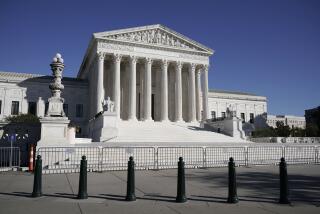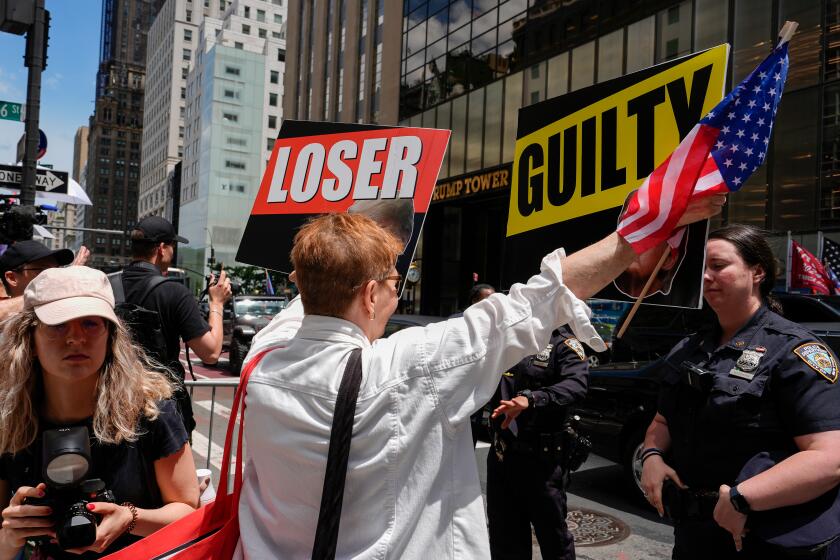Towers’ Symbolic Image
Architecture is an act of optimism. At its best, it seeks to exert a civilizing influence. Even the crudest monuments to power are intended as testaments to a culture’s durability.
No event in recent memory exposes the limits of such optimism like Tuesday’s catastrophic attack on the World Trade Center, which resulted in the collapse of two of the world’s tallest towers and the presumed death of thousands. What, after all, is the point of symbols in the face of such real horror? Even the stunning image of the towers’ collapse will soon be overshadowed by the mounting body count. In such a context, issues such as a building’s symbolic potency or aesthetic beauty seem of negligible importance.
Yet the targeting of the World Trade Center revealed a keen understanding on the part of the terrorists of the symbolic importance such buildings play in the collective conscience of a people. Like the Pentagon, which was also attacked Tuesday, the twin towers embody an essential element of the American identity: an unshakable faith in the future. Like the disaster site itself, that faith has been severely damaged. Both will have to be carefully reconstructed. And once that process begins, architecture will become a critical tool in reshaping that symbolic landscape.
In the American collective imagination, the skyscraper occupies a privileged position. Since the first masonry towers began to rise in Chicago at the end of the 19th century, skyscrapers have come to represent the ethos of unrelenting progress that is a fundamental tenet of the American identity. In essence, the race to create cities dominated by increasingly tall buildings was an expression of the country’s technical bravura.
That notion of the vertical city was embraced most fully in Manhattan. It is summed up in the construction of the Empire State Building--at the rate of more than one floor per day--and other landmarks, such as the Chrysler Building and Rockefeller Center, all conceived during the height of the Depression.
Together, such early monuments to the new metropolis seemed to capture America’s image as an industrial giant, a nation pointed fearlessly toward the future, free of the suffocating, worn-out traditions of the old world. But they were also symbols of the relentless surge of American capitalism, its triumphant self-confidence even in the face of economic distress. Their enormous scale were meant to inspire faith in the durability of that system.
The World Trade Center towers were the offspring of such monuments to the country’s emerging global power. Completed in 1973, they were seen as a final testament to New York’s position at the center of the financial world. As architecture, they were not particularly stylish. With its repetitive rows of steel columns and slot-like windows, the towers lacked the dignity of the Empire State Building’s limestone facades, for example, or the element of fantasy that made the Chrysler Building such a beloved monument. Yet despite its mediocrity as a work of architecture, the Trade Center’s psychological impact on the city’s collective identity was indisputable. Visually, it was more than a blunt symbol of a capitalist society. Its massive forms provided a reassuring image of stability amid New York’s congested, sometimes chaotic urban landscape. Set at Manhattan’s southern tip, it was the city’s emotional anchor.
The horrific image of Tuesday’s events will deal a permanent blow to that sense of shared urban identity. When the second tower fell, 103 minutes after being hit by a hijacked jet, the implosion demonstrated that even the most enduring images from our collective identity can disappear instantly.
America is now faced with two fundamentally divergent choices. The first, a natural impulse, would be to lash out at our enemies while barricading ourselves in an impregnable fortress. After the devastation caused by the Oklahoma City bombing in 1995, for example, the U.S. Government Services Administration issued strict new security guidelines for the design of new government buildings. Dozens of new courthouses have been built since then. Often, the results were imposing concrete structures, grim symbols of a society under siege.
The other option requires more courage. It would call for creating an urban landscape shaped by qualities of openness and empathy, not paranoia. Such a strategy would reflect the best principles of a democratic society.
It is in that context that architecture may ultimately play a significant role. The skyline of downtown Manhattan has been permanently altered. Yet once the dust settles, America will have to begin the process of rebuilding. And what rises there will carry enormous symbolic weight.
As such, any design will be seen as an expression of America’s shifting ideological stance. One can imagine, amid the sorrow, the creation of an even more lasting symbol, one that, by embodying our best values, can somehow reaffirm a spirit of optimism lost in the wake of this tragedy.
More to Read
Start your day right
Sign up for Essential California for news, features and recommendations from the L.A. Times and beyond in your inbox six days a week.
You may occasionally receive promotional content from the Los Angeles Times.






